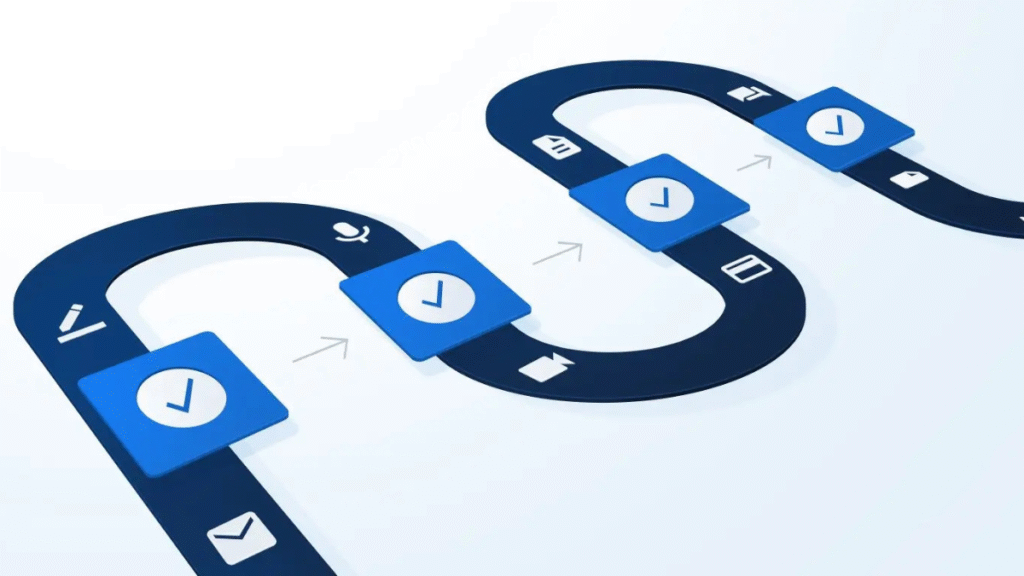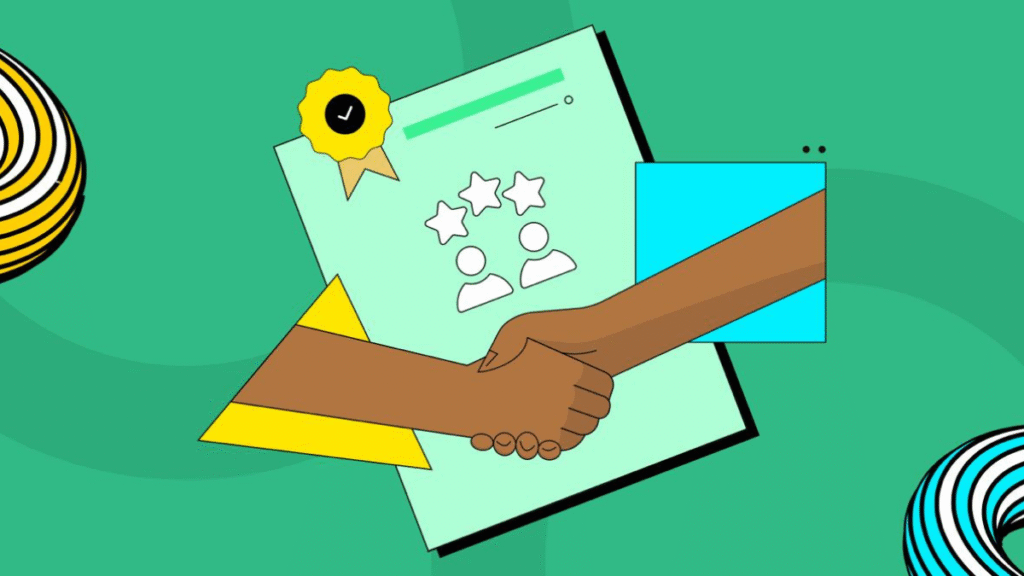Understanding the marketing funnel is essential for anyone looking to create effective marketing strategies. It helps businesses visualize the customer’s journey from awareness to conversion and beyond. This step-by-step guide for beginners will explain each stage of the funnel, why it matters, and how you can optimize it to improve your results.
What is a Marketing Funnel?
The marketing funnel is a model that illustrates the process of turning prospects into customers. It represents the journey a person takes from first learning about your brand to making a purchase—and ideally becoming a loyal advocate.
Key Characteristics:
- Visual Representation: Shaped like a funnel—wide at the top, narrow at the bottom.
- Structured Flow: Users move through different stages.
- Behavior-Driven: Each stage aligns with specific customer behavior.
Why Is the Marketing Funnel Important?
A clearly defined funnel allows marketers to:
- Understand where leads drop off
- Optimize messaging and channels
- Align sales and marketing teams
- Measure ROI more effectively
The Stages of the Marketing Funnel
Let’s break down the funnel into its primary stages and explore how each one works.
1. Awareness Stage
Objective: Capture Attention
This is the top of the funnel (ToFu), where potential customers first learn about your brand.
Strategies:
- Social media campaigns
- Blog posts and SEO
- Influencer collaborations
- Display ads
Metrics to Track:
- Website traffic
- Impressions
- Reach
- Social shares
2. Interest Stage

Objective: Spark Curiosity
Once awareness is established, the goal is to generate interest and get users to explore more.
Strategies:
- Email newsletters
- Downloadable lead magnets (eBooks, guides)
- Engaging videos or webinars
- Case studies
Metrics to Track:
- Email open/click rates
- Time on site
- Engagement rate
3. Consideration Stage
Objective: Build Trust
Now the prospect is comparing your brand with competitors. Your role is to demonstrate value.
Strategies:
- Free trials or demos
- Comparison guides
- Customer testimonials
- Product explainers
Metrics to Track:
- Demo requests
- Bounce rates
- Retargeting ad CTR
4. Intent Stage
Objective: Nudge Toward Purchase
At this stage, prospects are ready to buy, but they might need one final push.
Strategies:
- Special discounts or offers
- Abandoned cart emails
- Limited-time promotions
- Live chat support
Metrics to Track:
- Cart additions
- Checkout starts
- Promo code usage
5. Purchase Stage
Objective: Complete the Sale
This is the bottom of the funnel (BoFu), where the conversion happens.
Strategies:
- Simplified checkout process
- Multiple payment options
- Strong CTAs
- Personalized thank-you messages
Metrics to Track:
- Conversion rate
- Average order value
- Revenue
6. Loyalty & Advocacy Stage
Objective: Build Lifetime Value
Your relationship doesn’t end at the purchase. Loyal customers can become brand ambassadors.
Strategies:
- Loyalty programs
- Referral incentives
- Follow-up emails
- Community building
Metrics to Track:
- Repeat purchases
- Referral rate
- Customer satisfaction (NPS)
Optimizing the Funnel at Every Stage
Awareness
- Invest in content marketing and SEO
- Collaborate with influencers
- Use paid media for broader reach
Interest
- Offer downloadable content
- Personalize email campaigns
- Run educational webinars
Consideration
- Provide social proof and testimonials
- Create product comparison pages
- Offer a no-risk trial
Intent
- Send targeted offers based on behavior
- Use retargeting ads
- Offer real-time support
Purchase
- Make checkout mobile-friendly
- Provide multiple payment options
- Confirm orders with personalized emails
Loyalty

- Launch loyalty rewards
- Encourage reviews and referrals
- Send valuable post-purchase content
Common Funnel Mistakes to Avoid
- Ignoring the post-purchase stage
- Using the same message for every stage
- Not tracking funnel performance
- Failing to retarget users who drop off
- Overloading users with too much information early on
Tools to Build and Monitor Funnels
- Google Analytics: Track user behavior and conversion paths
- HubSpot: CRM and funnel tracking
- ClickFunnels: Build custom funnels easily
- ActiveCampaign: Email and automation
- Hotjar: Understand on-site behavior
Funnel Metrics That Matter
- Cost Per Lead (CPL)
- Lead-to-Customer Rate
- Customer Lifetime Value (CLTV)
- Funnel Conversion Rate
- Return on Investment (ROI)
Also Read: The Ultimate Guide To Social Media Marketing In 2025
Conclusion
The marketing funnel remains one of the most effective frameworks for understanding and optimizing the customer journey. Whether you’re just starting or looking to refine your strategy, this step-by-step guide provides the foundation needed to build successful campaigns. Remember to align content with the buyer’s intent at each stage and continuously test and improve your efforts. A well-optimized funnel doesn’t just drive conversions—it builds lasting relationships.
FAQs
1. What is the most important stage in the marketing funnel?
All stages are important, but the consideration and intent stages often have the most impact on conversion.
2. How long does it take to build an effective funnel?
It can take a few weeks to several months depending on your business, resources, and testing cycles.
3. Can I use the same funnel for B2B and B2C?
While the structure is similar, messaging and tactics should be tailored to the audience type.
4. What tools are best for funnel automation?
ClickFunnels, HubSpot, ActiveCampaign, and Mailchimp are popular choices for beginners.
5. How do I know if my funnel is working?
Track key metrics like conversion rates, drop-off points, and ROI to measure performance.


